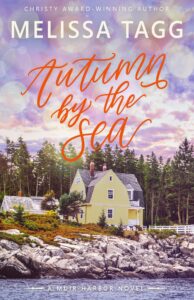by Melissa Tagg, @Melissa_Tagg
All right, tell me I’m not the only one who has ever been bored by one of her own scenes? Like, you’ve printed out your snazzy double-spaced manuscript and are giving it one more read-through before sending it on to your editor or beta reader or whoever but you find your eyes sort of glazing over during a particular scene?
The duds. We’ve all written then, right? It’s a scene we need to move the story forward but it just doesn’t live up to the ones around it. And we think to ourselves, “Oh my goodness, if I’m boring myself, I’m surely going to bore the reader, too.” And, welp, that’s just not ideal. ☺
Now, sometimes those dud scenes just need a complete and total gut job. But other times, perhaps most of the time, they just need a little sprucing up. So here are a few quick tips for adding some polish and pizazz to your scenes:

- Enter five minutes late, leave five minutes early. I wish I knew who came up with this bit of scene-writing wisdom so I could give them credit because, man, if there was ever a tip that came in clutch for me time and time again, it’s this one. So often when I’m reading one of my own scenes and it’s feeling too long or too so-so or simply good-but-not-great, working on my entrance and exit makes all the difference. Start the scene a little later, when the characters are already mid-action or mid-conversation. End the scene a little early to give readers that sense of intrigue and that feeling of “Whoa, next chapter, please!”
- Shades of emotion. Sometimes when I’m writing quickly, I’ll find myself settling for surface emotion . . . and that’s when I end up with scenes that don’t pack a true emotional punch. I let my character get angry when really there’s something deeper going on. I got the conflict on the page, but not the tension. I settled for black and white emotion and missed out on the different shades that add color and depth. And that’s when I have to ask myself, okay, what’s happening underneath the surface for my character? Where can I burrow in a little more? What’s she really feeling right now? When I take the time to do that, that’s when I find the emotional gems. That’s when I’m able to take a scene from shallow to something more, and characters from surface-level to complex and relatable.
- Mood is in the details. To me, the right mood makes a scene and as a reader, I love, love, love when the mood just sort of rises up off the page and curls around me. As a writer, when I’m struggling to get the mood right in a scene—or when it feels like it’s missing altogether—I think the easiest and best way to find it is in the details. Through the five senses, through storyworld close-ups. Like a photo on a fridge . . . or, a fridge with no photos at all. Both tell us something. Both, depending on the words you use, can set a certain mood. When a scene is feeling blah, look for opportunities to set the mood through small details.
There you go—three quick tips to spruce up any scene.
Abandoned as a toddler, Sydney Rose has spent years wondering who she really is, homesick for a life she’s never lived. When a private investigator crashes into her world, she finds herself heading to a tiny seaside town in Maine to meet a woman named Maggie, who’s searching for the granddaughter she lost decades ago.
If not for Maggie, Neil MacKean might still be back in Scotland, bereft and alone. Instead, he has a full life in Muir Harbor with an adopted family he loves and a blueberry farm to run. But the farm is struggling and strange occurrences have him concerned. Worse, Maggie’s once again caught up in the past, convinced she’s finally found her long-lost granddaughter.
Worried for Maggie, Neil is suspicious of the city girl who shows up at the farm. But there’s something about Sydney that tugs on him, drawing out secrets he never meant to share. While Neil grapples with the future of the farm, Sydney wrestles with a past that’s messier than ever. Together, they’re pulled into a mystery complete with a centuries-old legend, unexpected danger . . . and a love as deep and wild as the sea.

Melissa Tagg is the USA Today bestselling, Christy Award-winning author of swoony and hope-filled small-town contemporary romances, including the Muir Harbor series, the Maple Valley series, and the Walker Family series. She’s also a former reporter, current nonprofit marketing strategist, and total Iowa girl. Melissa has taught at multiple national writing conferences, as well as workshops and women’s retreats. When she’s not happily lost in someone else’s book or plugging away her own, she can be found spoiling her nieces and nephews and daydreaming about her next fictional hero. Connect with Melissa at melissatagg.com.


